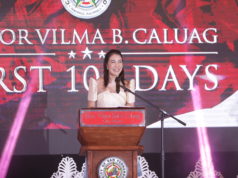ON MAY 30, 1892, Fernando Amorsolo, declared as the first National Artist in Painting in 1972 and the so-called “Grand Old Man of Philippine Art”, was born in Paco, Manila.
Amorsolo earned a degree from the Liceo de Manila Art School in 1909 and entered the University of the Philippines’ School of Fine Arts. He was a portrait artist and known painter of rural Philippine landscapes.
He graduated with honors from the U.P. in 1914 and got study grant in Madrid, Spain. He was also able to visit New York, where he encountered postwar impressionism and cubism, which would be major influences on his work.
To make money while in school, Amorsolo joined competitions and did illustrations for various Philippine publications. He also illustrated for the religious Pasion books.
He set up his own studio upon his return to Manila and painted prodigiously during the 1920s and the 1930s.
Believed to have painted more than 10,000 pieces, his Rice Planting (1922), which appeared on posters and tourist brochures, became one of the most popular images of the Commonwealth era.
Beginning in the 1930s, Amorsolo’s work was exhibited widely both in the Philippines and abroad. He became the favorite Philippine artist of United States officials and visitors in the Philippines. In 1939, his oil Afternoon Meal of the Workers won first prize at the New York World’s Fair.
Amorsolo’s optimistic, pastoral images set the tone for Philippine painting before World War II. Except for his darker World War II-era paintings, Amorsolo painted quiet and peaceful scenes throughout his career.
Notably, he also painted a series of historical portraits on pre-Colonial and Spanish Colonization events, including his Making of the Philippine Flag, which was widely reproduced. He also painted oil portraits of General Emilio Aguinaldo, other Philippine presidents and prominent Filipinos.
He served as director of the College of Fine Arts of the University of the Philippines from 1938 to 1952.
He died on April 24, 1972 at the age of 79.




